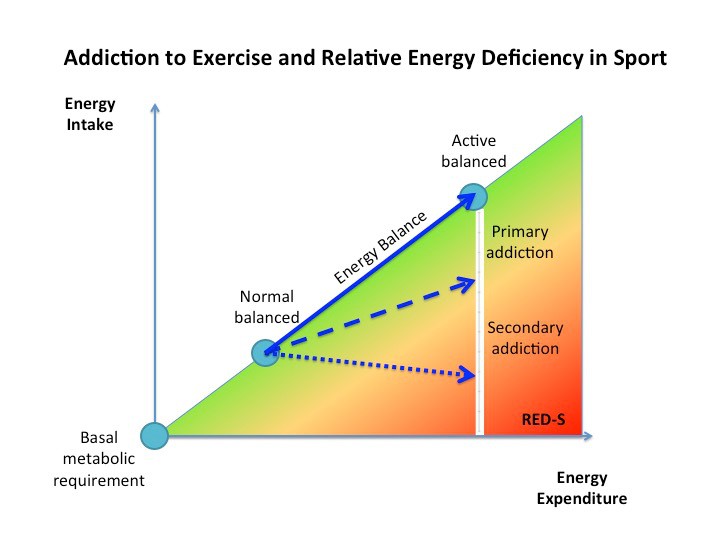Image credited to: Ryder Wear
By Dr Nicky Keay nickykeay
Health is not just the absence of illness, but rather the optimisation of all components of health: physical, mental and social. Exercise has numerous benefits on all these aspects. However, a recent article in the British Medical Journal described how exercise addiction can have detrimental physical, mental and social effects.
Dedication and determination are valuable qualities required to be successful in life, including achieving sporting prowess. Yet, there is a fine line between dedication and addiction.

Image courtesy: www.basem.co.uk
To improve sports performance, cumulative training load has to be increased in a quantified fashion, to produce an overload and hence the desired physiological and Endocrine adaptive responses. Integrated periodisation of training, recovery and nutrition is required to ensure effective adaptation. Sufficient energy availability and quality of nutrition are essential to support health and desired adaptations. On the graph above the solid blue line represents a situation of energy balance, where the demands of increased training load are matched by a corresponding rise in energy availability. This can be challenging in sports where low body weight confers a performance or aesthetic advantage, where the risk of developing relative energy deficiency in sport (RED-S) has implications for Endocrine dysfunction, impacting all aspects of health and sports performance.
Among those participating in high volumes of exercise, what distinguishes a healthy level of commitment from exercise addiction? Physical factors alone are insufficient: all those engaging in high levels of training can experience overuse injuries and disruption in Endocrine, metabolic and immune systems.
Equally, in all these exercising individuals, overtraining can result in underperformance.
Psychological factors are the key distinguishing features between the motivated athlete and the exercise addict. In exercise addiction unhealthy motivators and emotional connection to exercise can be identified as risk factors. In exercise addiction the motivation to exercise is driven by the obsession to comply with an exercise schedule, above all else. This can result in negative effects and conflict in social interactions, as well as negative emotional manifestations, such as anxiety and irritability if unable to exercise, including the perceived necessity to exercise even if fatigued or injured.
Two categories of exercise addiction have been described. Primary exercise addiction is the compulsion to follow an excessive training schedule. Without balancing energy intake, the physical consequence may be a relative energy deficiency, as indicated on the graph by the dashed blue line. In secondary exercise addiction, the situation is compounded by a desire specifically to control body weight. These individuals consciously limit energy intake, almost inevitably developing the full clinical syndrome described in RED-S, dragging them down to the position indicated by the dotted blue line on the chart. These situations of exercise addiction can lead to varying risk categories of RED-S.
As described at the start of this blog, there is a blurred boundary between the dedicated athlete and the exercise addict. In practice there is most likely a cross over. For example, an athlete may start with healthy motivators and positive emotional connection to exercise, which can become a primary addiction to adhere rigidly to a training schedule, rather than putting the emphasis on the outcome of such training. In the case of an athlete where low body weight is an advantage, it is easy to appreciate how this could become a secondary exercise addiction, where the motivation for exercising becomes more driven by the desire to control weight, rather than performance.
In order to support those with exercise addiction, discussion needs to focus on adopting a more flexible approach to exercise, by recognising that exercise addiction has detrimental effects on all aspects of current and long term health. Furthermore, in the case of athletes, a multi-disciplinary approach is desirable to help the individual refocus on the primary objective of training: to improve performance. In all situations, discussion should explore modifications to exercise and nutrition, in order to prevent the negative effects of RED-S on health and performance.
Exercise has numerous health benefits and is usually viewed as positive behaviour. However, the outcome of exercise is related to the amount of training, appropriate nutrition and motivation for exercising.

